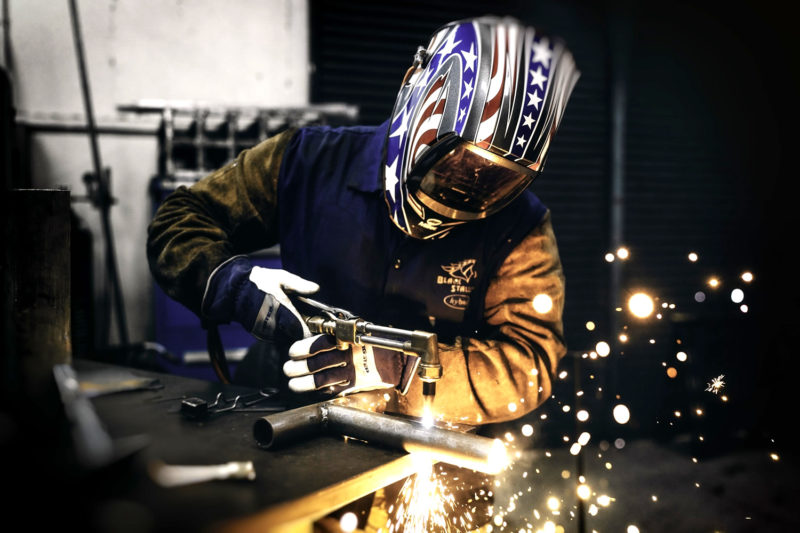 Focusing on storage and shipping methods, plus adhering to a governing specification, are important for not only operating efficiently but to avoid costly rework. Rust on a stainless steel pipe surface presents a serious concern for oil and gas companies operating piping in fractures in the oil field marine environment, including adjacent coastal areas. When rust appears on the inside or outside surface of a stainless steel pipe, corrosion inspection teams notice, and questions arise as to why it occurred. To obtain high-integrity weldments meeting demanding oilfield service conditions, the Engineering Authority responsible for designing, fabricating, and installing weldments in oilfield applications outsources due diligence for selecting, developing, and supporting subcontracting fabricators.
Focusing on storage and shipping methods, plus adhering to a governing specification, are important for not only operating efficiently but to avoid costly rework. Rust on a stainless steel pipe surface presents a serious concern for oil and gas companies operating piping in fractures in the oil field marine environment, including adjacent coastal areas. When rust appears on the inside or outside surface of a stainless steel pipe, corrosion inspection teams notice, and questions arise as to why it occurred. To obtain high-integrity weldments meeting demanding oilfield service conditions, the Engineering Authority responsible for designing, fabricating, and installing weldments in oilfield applications outsources due diligence for selecting, developing, and supporting subcontracting fabricators.Fabrication Synopsis
The critically of ensuring manufacturing readiness for a subcontracted fabricator is best handled through analyzing consequences experienced by an Engineering Authority for failing to perform outsourcing due diligence.
Type 316L austenitic stainless steel pipe spools-pipe sizes 2-to 20-in.outside diameter (OD), schedules 10 and 40- were subcontracted for fabrication in accordance with ASME B31.3, process piping.
All pipe welds were visually and radiographically inspected. Upon fabrication completion, all pipe spools were hydrostatically tested then transported to a remote, seaside construction site and stored outdoors, unprotected, for two or four weeks. As the pipe spools lay in storage awaiting installation, widespread rust developed at weld joints and along pipe lengths.
Subsequently, all pipe spools were visually inspected, and many were deemed unacceptable for installation. Pipe spool installation was delayed and an $800,000 cost was endured by the engineering authority to expedite corrective measures, such as chemical treatment and fabrication rework, for obtaining rust-free pipe spools. This event also triggered a root cause investigation encompassing the respective fabricator- the company subcontracted by the engineering authority to fabricate the projects stainless steel pipe spools- along with the engineering authority.
Root Cause Investigation
Six Sigma was employed as a root cause analysis tool in determining why widespread rusting of the 316L stainless steel pipe spools had occurred. The investigation encompassed an on-site review of the fabricator's production facility, shop floor discussion, and stainless steel material/rust specimens. The following factors were identified to be the root causes involving both the fabricator and engineering authority.
Rusting occurred for two reasons: an anodic reaction resulting from exposure of surface iron (Fe) contamination to a marine environment and iron contamination from an incorrect weld filler metal (a carbon-steel weld filler metal).
Iron Contamination Mechanism
The dissemination of pertinent project documentation is an engineering authority responsibility for welded product outsourcing. However, there was no governing stainless steel material handling and control specification for the project.
Material Handling Issues
Stainless steel pipes were shipped by the pipe manufacturer to the fabricator, with carbon-steel banding straps placed in direct contact with pipe material, so rust strips developed where carbon-steel banding straps had scraped and gouged the pipe. The specification would have stipulated the use of noncontaminating banding straps. Surface rust manifestation is not easily and always successfully removed by mechanical techniques such as grinding, whereas chemical treatment with cleaning, descaling, and passivation is a more thorough and less invasive process.
As a corrective measure to eradicate exogenous iron contamination from the interior and exterior surfaces, project pipe spools were subjected to chemical treatment in accordance with ASTM A 380, Standard practice for cleaning, designing, and passivation of stainless steel parts, equipment, and systems.
Fabrication Practices
In addition, there was no presiding stainless steel welding specification provided by the engineering authority for the fabricator to comply with. A welding specification addresses mandatory requirements, specific prohibitions, and recommended guidelines for fabrication activities to ensure that the intended design services and performance characteristics of the pipe spools are met.
In manufacturing stainless steel weldments, a requisite is to physically isolate stainless steel manufacturing from carbon-steel welding operations to avoid iron contamination. However, within the fabricator's job shop, stainless steel pipe spools for the project were fabricated near to carbon-steel fabrication activities.
Shop and pipe spool cleanliness during production was not adequately maintained such that carbon-steel welding, grinding, and cutting particulate that had accumulated inside the stainless steel pipe spools corroded after being subjected to water for hydrostatic testing.
Widespread rusting of these type 316L stainless steel pipe spool was a direct result of the engineering authority failing to perform outsourcing due diligence. Doing so would have ensured manufacturing readiness of the fabricator prior to and throughout pipe-spool productions. Also, if outsourcing due diligence had been performed, both the engineering authority and fabricator would have been prepared for production activities.
